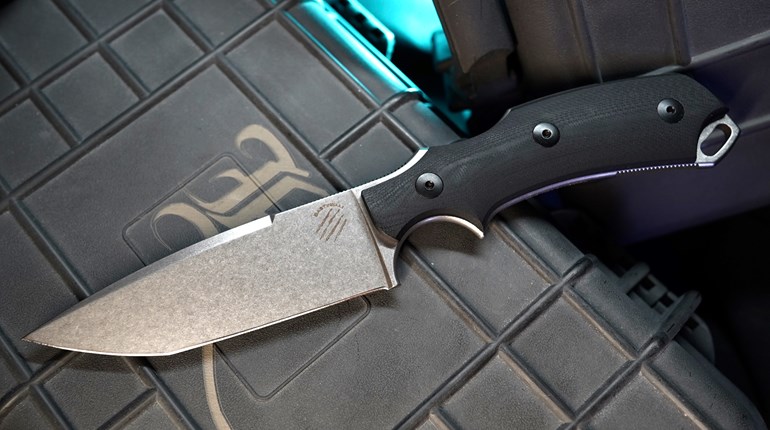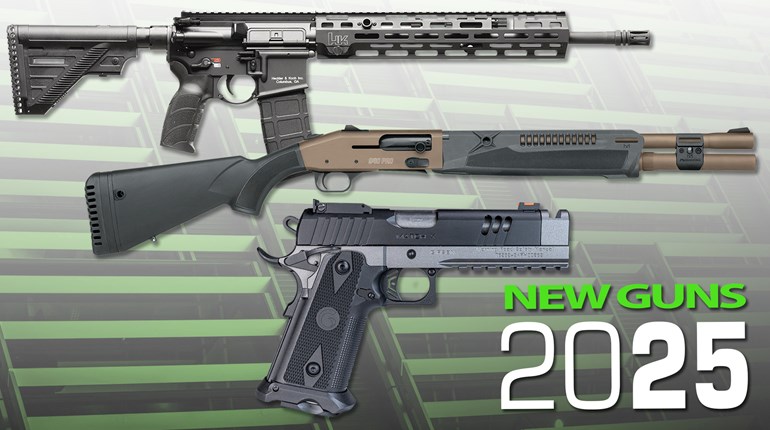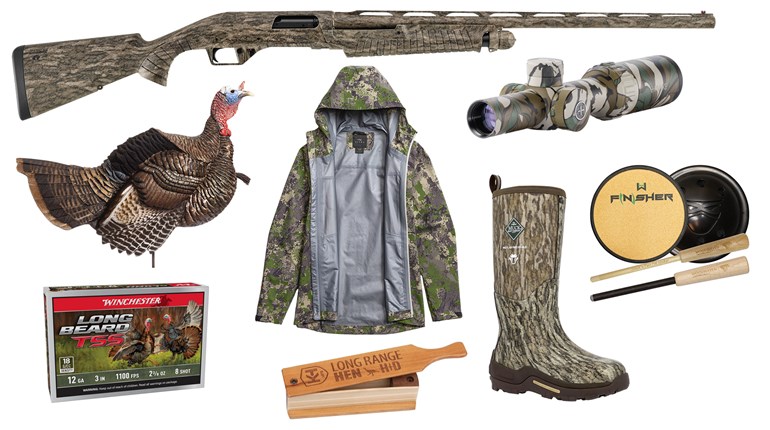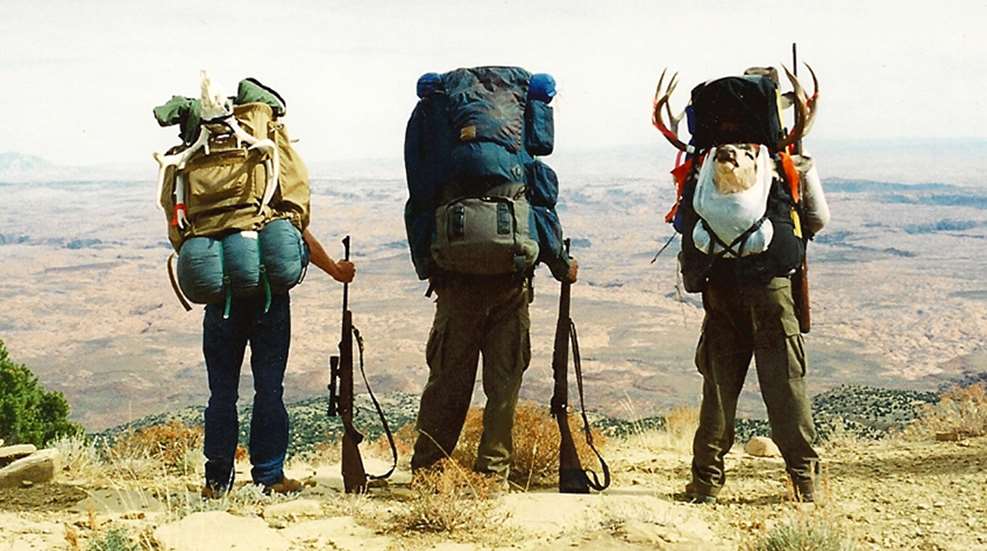
Until just a couple decades ago, the ideal hunting rifle featured a sleek blued barreled action bedded into a nice piece of walnut and was chambered in a fast-shooting caliber loaded with light-for-caliber bullets. Three-to-nine power riflescopes were standard, and hunters estimated range by sight and experience. The average rifleman could consistently make good first-shot kills on game out to 250 yards or so, and really good shooters out to 400. In those days, that was a long way. That’s all changed.
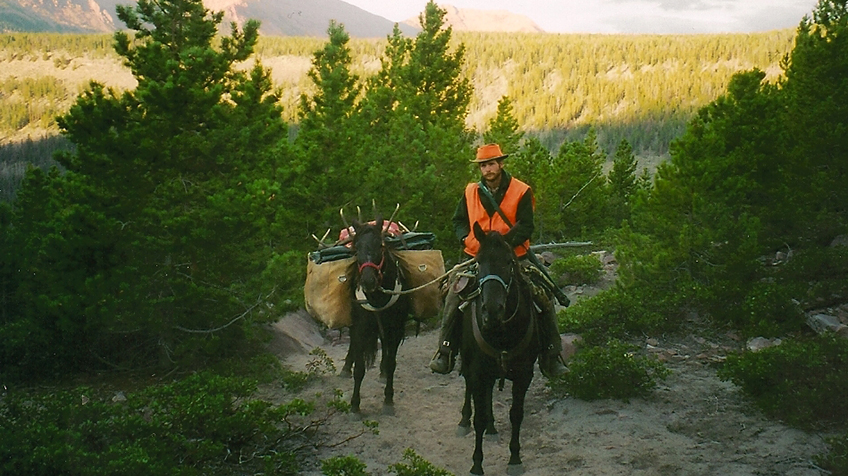
Now, your ideal hunting rifle features a stainless steel or carbon fiber barrel mounted to a stainless or titanium bolt action, and bedded into a hand-laid fiberglass or carbon fiber synthetic stock. It’s chambered in an aerodynamic caliber loaded with heavy-for-caliber bullets. Your scope will likely sport a large magnification range and posses a ballistic elevation turret, and you’ll quarterback the system with a laser rangefinder. Today, a good rifleman can consistently make good first-shot kills on game out to 500 or 600 yards, and really good shooters even further.
Rangefinders
Before the advent of laser rangefinders, estimation was the only option for most hunters. Hunters worked hard to develop their ability to estimate range accurately, and became reasonably adept out to 300 or 400 yards, but beyond that it was a crapshoot.
Now, you can buy a rangefinder that will give you an instant and accurate range reading. The finest rangefinders (like the Gunwerks G7, Zeiss RF binocular, and Leica Geovid) also provide atmospheric information and ballistic corrections. More on that later.
In a nutshell, I believe laser rangefinders were the single most influential building block in today’s hunting scene. They were the tool that changed the game.
Riflescopes
When I was a kid, a lot of hunters still used fixed 4X or 6X scopes. Variable 3X9 or 4X12 scopes (a 3X zoom range) were considered pretty awesome and better for “long range.” When a hunter wanted to take a “long” shot, he would aim his crosshairs above the spot he intended to hit, using his target’s body size as a reference to give him an estimated holdover. For instance, if he knew that his bullet impacted 7 inches low at 300 yards, he would aim just below the backbone on a mule deer, knowing his bullet would drop right into the vitals. Four hundred yards was much harder.
Now, scopes are available with 5X, 6X, and even 8X zoom ranges, and with very high magnification. They are incredible tools with magnificent optical clarity, and while they sport correspondingly high price tags, they’re worth every penny; but magnification is not what makes them the wide receiver capable of snatching and running with your rangefinder’s info—it’s all in the dial.
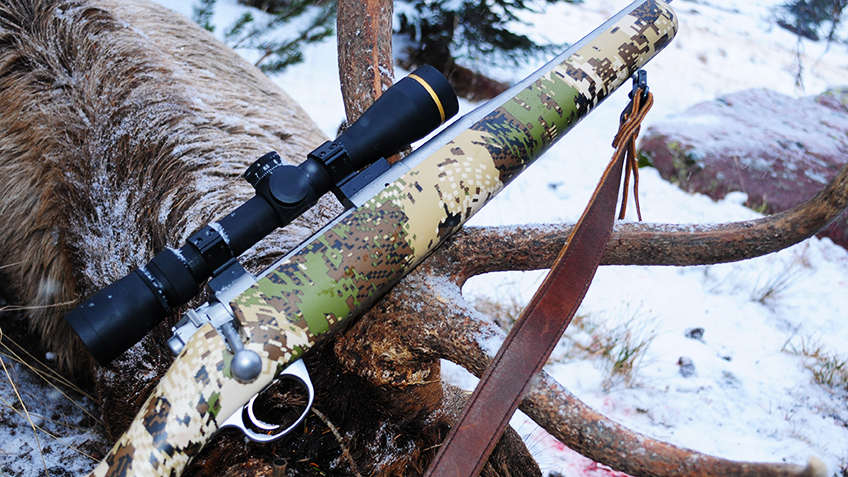
Great hunting scopes today feature an exposed elevation turret; meaning you can readily dial it up and down, adjusting the reticle inside. So long as you have your ballistic information (click here for an article about that), you can simply crank your elevation turret to the correct position, hold your crosshairs directly on the target and take the shot.
Good hunting scopes feature a zero-type stop that you can set, so after dialing for distance, you can simply spin your dial down till it stops perfectly on your zero. The best hunting scopes also feature a zero-lock type mechanism, which holds your dial in the zero position until you release it to dial for your long shot.
Bullets
Before laser rangefinders, hunters wanted their rifle to shoot as flat as possible. Light(ish) bullets going as fast as they could be pushed were the name of the game, because the flatter the trajectory, the less the hunter had to worry about hold-over. The fact that those light, fast bullets dropped velocity and energy like a brick after 400 or 500 hundred yards was unimportant, those range were too far for most hunters to estimate and hold over for, anyway.
Nowadays, since you can accurately range and dial for distances well beyond 400 yards, you want a hunting bullet that is aerodynamic. Super fast is no longer as important, especially since stability and consistency issues can develop when you push a bullet much beyond 3000 fps. What is important, is maintaining downrange velocity and energy.
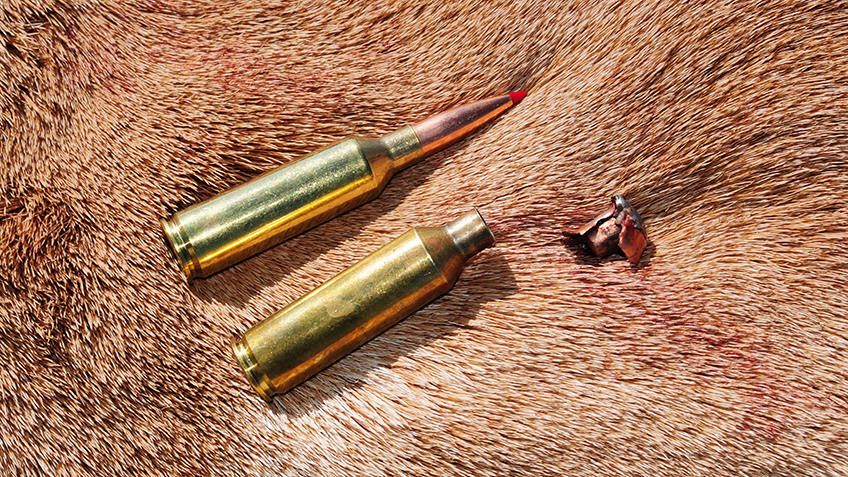
Ammo manufacturers stepped up by building long, streamlined, heavy-for-caliber bullets that slide through air like a knife through butter on a hot south Texas day. Tighter accuracy standards are held to meet the criteria of today’s accuracy-oriented shooters. Bullets are designed for good terminal performance at a wide variety of impact velocities, which is important when you consider that you may shoot an elk at 27 yards in thick timber with a just-screamed-out-of-the-muzzle bullet, or 720 yards across a canyon with a bullet that’s spent much of its velocity.
Cartridges and Twist Rate
Many of the time-proven cartridges of the 20th century shine with light-for-caliber bullets, but fail to perform with heavy, aerodynamic projectiles. The main culprit is the twist rate in barrels commonly chambered in those calibers—a slow-twist barrel that performs admirably with a light, fast bullet will often fail to stabilize a long, aerodynamic one. The legendary .270 Winchester is a perfect example; it’s a wonderfully potent round when pushing a 130-grain pill, sizzling fast and flat out to 350 yards or so, but many .270s won’t shoot an aerodynamic 150-grain or heavier bullet with even passing accuracy.
As a result, the last couple decades have seen some very good long-range cartridges born, including the 21st Century superstar 6.5 Creedmoor, the hot rod .28 Nosler and 6.5 PRC, the .224 Valkyrie, and the .300 PRC. Several historically great cartridges have also risen in the ranks of calibers that excel at long ranges, including the 7mm Rem. Mag., .280 Ackley Improved and the .300 Win. Mag. All flourish when chambered in fast-twist barrels and fed long-range projectiles. What this means for you is simple: If you’re planning to shoot long, don’t take the old .30-30 off the gun rack. Set yourself up for success with a caliber that loves to reach out.
Rifles
One of my favorite rifles is built on an old, military-issue Springfield action. It’s chambered in .30-06, sports a 22-inch blued barrel and is bedded in a plain walnut stock. A Timney trigger and Leupold 3X-9X-40mm scope complete the package. For years it was my go-to hunting rifle, and with it I have taken my best-ever whitetail, best mule deer and best rifle-killed bull elk. I’ve probably harvested more meat with it than all my other rifles combined. My longest kill with that rifle was 328 yards. It’s a perfect example of a great old-time hunting rifle. Rifles like that have made meat for well over a century, and they will continue to do so for a long time. But now there are better options for western, big-country hunting.
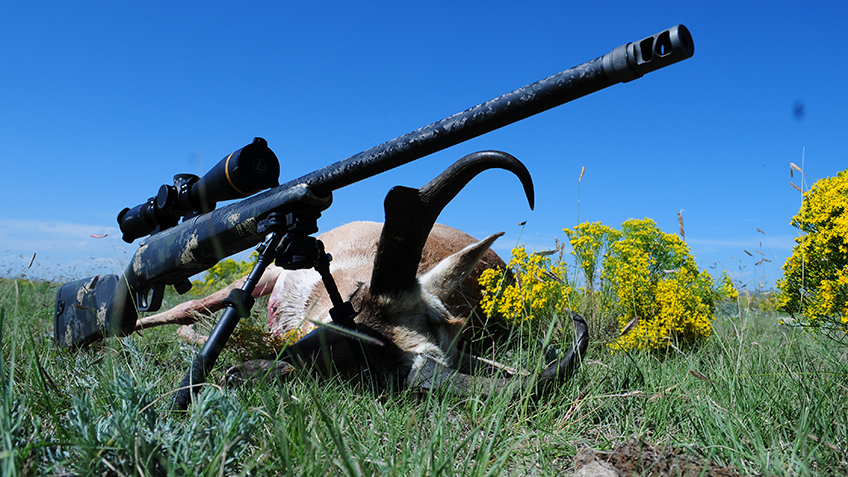
Long-range shooting has inspired surpassing innovation in the world of rifles and rifle building. Stainless steel has replaced carbon steel in barrels and actions. Carbon fiber wrapped barrels add accuracy-enhancing stiffness and wick heat away from chambers, helping maintain accuracy during long strings of fire and helping to prevent chamber erosion. Barrels and actions are skeletonized to reduce weight while maintaining stiffness, integrity and accuracy. Stocks are built with fiberglass and carbon fiber to withstand temperature and moisture extremes while staying true. Advanced stock design lends to rifles that are ultralight and ergonomically consistent. Triggers are perfect, accuracy is superb … I could go on.
That’s a long-winded way of saying that now more than ever before, you can walk into a gun shop or hop online and buy or a rifle that’s match-grade accurate, impervious to weather and lightweight enough to carry on a hardcore backcountry hunt. It’s going to cost a bit more than a traditionally built blued-steel-and-walnut rifle, but it’s also going to be more capable.
Electronics
For the hunters of yesteryear, there were no electronics, therefore a “then” and “now” comparison is rather pointless. But the influence exerted by electronics in today’s hunting arena is huge. In a nutshell, they allow you to range your quarry, read atmospherics such as barometric pressure, temperature, elevation and angle, and compute all those factors into the correct “come-up” to crank your turret and make the shot. If you want to learn to shoot long range, you need to learn to use a ballistic calculator, and to understand the influences that heat, cold, elevation, angle and more exert on your bullet.
The Upshot of it All
What is the upshot of this all? It means that you can shoot almost twice as far as you could before upgrading to modern equipment, as long as you are a decent shot with a rudimentary understanding of math and ballistics. It means that you can hunt more effectively than ever before. It means you have a better chance of harvesting a trophy of a lifetime animal. It means that our country is safer from invasion, because its hunting populace—at least the western portion—has become a nation of long-range shooters. It means that the quality of rifles, optics, ammo and projectiles available to us are superb.
It also means that conservation and game management strategies and protocols have become obsolete. A higher percentage of game per hunter will be harvested nowadays, because we’re more effective at taking game animals. Seasons and hunting opportunity may have to be curtailed to compensate.
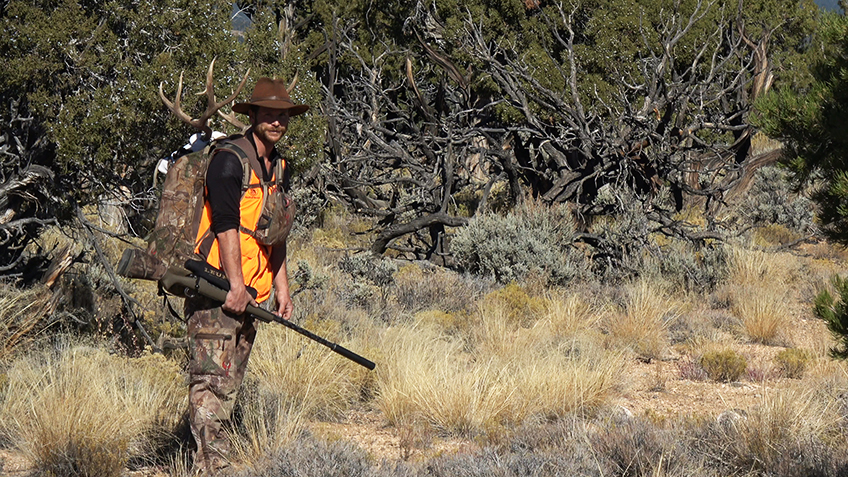
It means that while shooting skills are improving, stalking and hunting skills may suffer. If you no longer need to stalk within a couple hundred yards to make a clean kill, why would you? If young hunters never have to work for a shot, they won’t learn to hunt into the wind, strategize an approach or use terrain and vegetation to their advantage.
Worst of all, it means that a few irresponsible hunters will unfortunately take long-range shots they are not capable of, resulting in wounded and lost game. This is ever the case with those hunters, and regardless whether they are hunting close or long range, they will take unethical shots. Today’s equipment just gives them one more way to do it.
Conclusion
In the end, so long as you exercise wisdom and good ethics, today’s superb hunting equipment can make you a better hunter, support a high average of clean kills, provide a lifetime of hunting and shooting enjoyment in the outdoors and make our nation a safer place.












